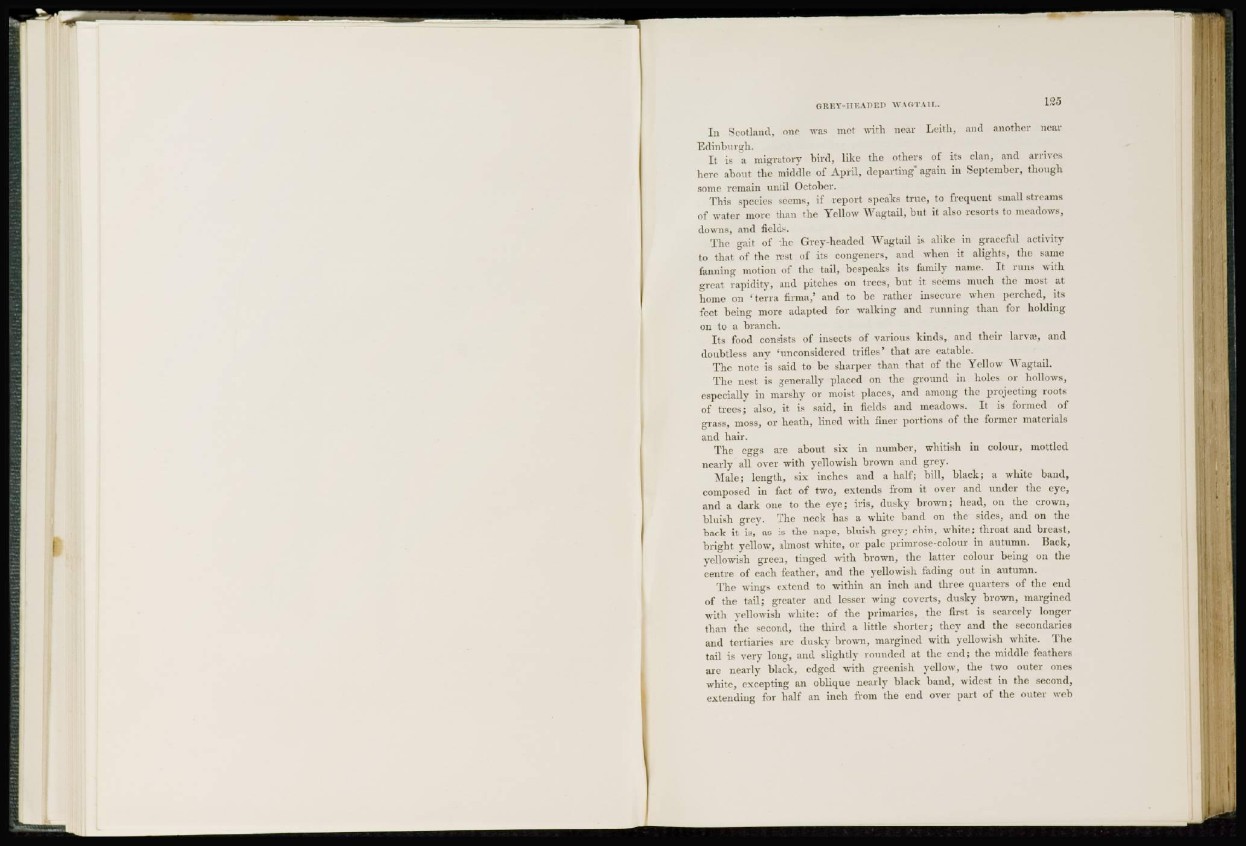
GBEY-HBADET) W iGTAIL. 125
In Scotland, one was mot with near Leith, and another near
Edinburgh.
It is a migratory bird, like the others of its clan, and arrives
here about the middle of April, departing"again in September, though
some remain until October.
This specie-- seem-., if report speaks true, to frequent small streams
of water more than the Yellow Wagtail, but it also resorts to meadows,
downs, and fields.
The gait of the Grey-headed Wagtail is alike in graceful activity
to that of the rest of its congeners, and when it alights, the same
fanning motion of the tail, bespeaks its family name. It runs with
great rapidity, and pitches on trees, but it seems much the most at
home on ' terra firma,' and to be rather insecure when perched, its
feet being more adapted for walking and running than for holding
on to a branch.
Its food consists of insects of various kinds, and their larva*, and
doubtless any 'unconsidered trifles' that are eatable.
The note is said to be sharper than that of the Yellow Wagtail.
The nest is generally placed on the ground in holes or hollows,
especially in marshy or moist places, and among the projecting roots
of trees; also, it is said, in fields and meadows. It is formed of
grass, moss, or heath, lined with finer portions of the former materials
and hair.
The eggs are about six in number, whitish in colour, mottled
nearly all over with yellowish brown and grey.
Male; length, six inches and a half; bill, black; a white band,
composed in fact of two, extends from it over and under the eye,
and a dark one to the eye; iris, dusky brown; head, on the crown,
bluish grey. The neck has a white band on the sides, and on the
back it is, as is the nape, bluish grey; chin, white; throat and breast,
bright yellow, almost white, or pale primrose-colour in autumn. Back,
yellowish green, tinged with brown, the latter colour being on the
centre of each feather, and the yellowish fading out in autumn.
The wings extend to within an inch and three quarters of the end
of the tail; greater and lesser wing coverts, dusky brown, margined
with yellowish white: of the primaries, the first is scarcely longer
than the second, the third a little shorter; they and the secondaries
and tertiaries are dusky brown, margined with yellowish white. The
tail is very long, and slightly rounded at the end; the middle feathers
are nearly black, edged with greenish yellow, the two outer ones
white, excepting an oblique nearly black band, widest in the second,
extending for half an inch from the end over part of the outer web